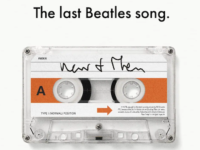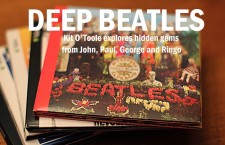The Beatles and India shared a symbiotic relationship in music and culture. As is well known, the group studied with the Maharishi Mahesh Yogi in February 1968, their time in Rishikesh inspiring much of the material comprising the White Album. Indian instruments such as the sitar and tambura figured on tracks such as “Norwegian Wood” and “Tomorrow Never Knows.”
George Harrison would begin his journey through Indian music and spiritualism with the Beatles, fusing Indian and Western sounds in such tracks as “Love You To” and “Within You Without You.” Today, Paul McCartney and Ringo Starr still advocate for Transcendental Meditation.
Previous documentaries such as 2020’s The Beatles in India have explored the group’s time in the country and how it influenced their music, but few have studied how the Beatles in turn influenced India. The Beatles and India addresses this gap in knowledge. Now streaming exclusively on Britbox, the new film focuses not only on how the country’s culture influenced the band, but how the Beatles inspired Indian musicians to experiment with other sounds and fashions.
Familiar Beatles scholars such as Mark Lewisohn and Steve Turner lend historical perspectives to the proceedings, including a fascinating discussion as to “Magic” Alex Mardas’ role in persuading John Lennon and Harrison that the Maharishi had seduced female followers. This revelation convinced the two remaining Beatles to leave the retreat (Starr and McCartney had already departed for unrelated reasons). Harrison later apologized to the Maharishi, feeling that the guru had been falsely accused. Other previously untold anecdotes from their time at the Rishikesh retreat include a rooftop concert at the Ashram bungalow where the Beatles stayed.
Where The Beatles and India particularly shines, however, is when it focuses on how the group impacted the country. Ironically, scenes from Help! are shown, which portray stereotypical images of Indians; instead, the group would later explode these caricatures by introducing the West to its music and fashions.
In turn, the documentary shows Indian musicians who incorporated the Beatles’ look and sound into their own music, such as the Savages. While younger generations embraced the group, older generations found themselves puzzled by the Beatles’ modern attitudes.
Director Ajoy Bose told the Guardian that his father’s problem with the Beatles “was that they didn’t behave ‘like Britishers’ – people with a stiff upper lip, who had short hair and didn’t let their feelings show. So the Beatles, with their long hair and jokes, really blew our minds.”
Indeed, a major theme of The Beatles and India is how the Beatles taught the country to expand their minds, to explore aspects of modern culture. In return, numerous musicians state, the Beatles made Indian music and fashion cool and approachable.
The documentary does not feature new interviews with McCartney and Starr, instead relying on archival footage from the Beatles. No original Beatles music is featured, although a companion album compliments the film: The Beatles and India: Songs Inspired by the Film. Contemporary Indian artists such as Anoushka Shankar (Ravi Shankar’s daughter), Anupam Roy, and Dhruv Ghanekar cover essential tracks. One special song included is “India, India,” a Lennon composition previously unreleased until 2010’s John Lennon Signature Box.
The Beatles and India provides a fresh perspective on a topic seemingly well-known to fans, and will inspire viewers to dig deeper into a transformative period in the Beatles’ story.
- The Rescued Early Paul McCartney Song That Completed ‘Beatles For Sale’ - December 4, 2024
- A Rare Beatles Cover Proves John Lennon Was Wrong About His Voice - November 26, 2024
- How John Lennon Came Roaring Back on the Beatles’ White Album - November 22, 2023



